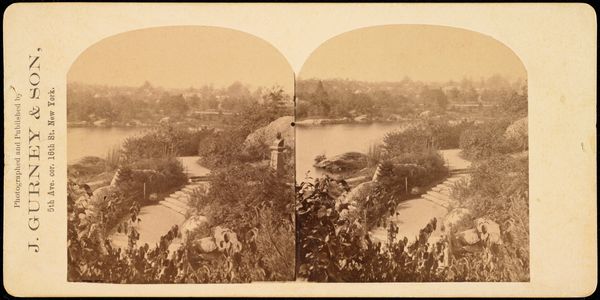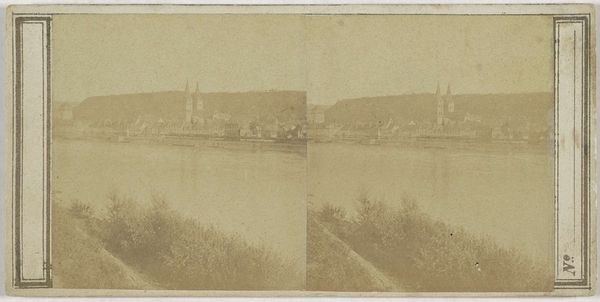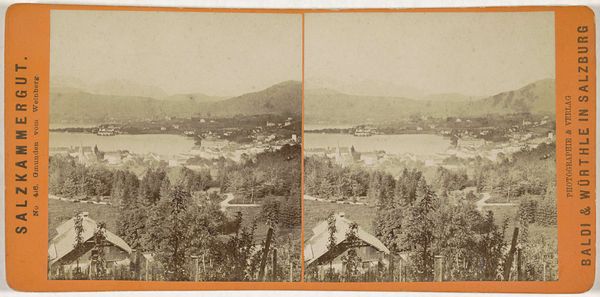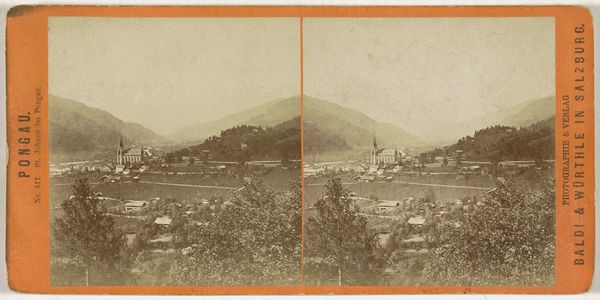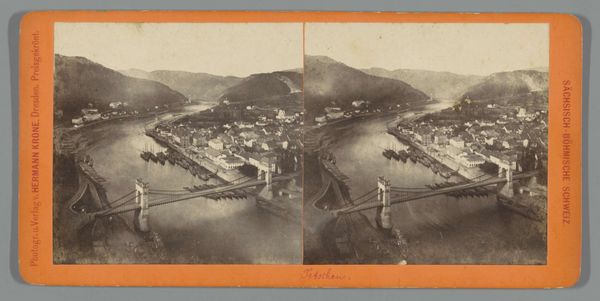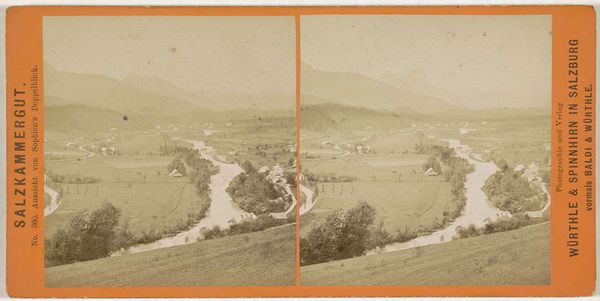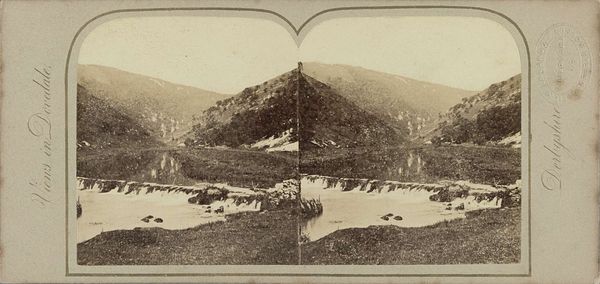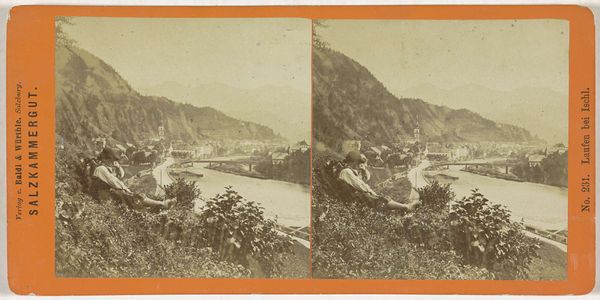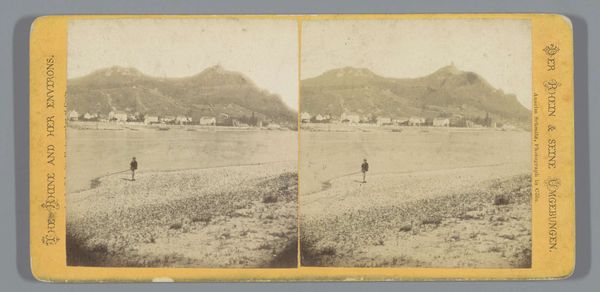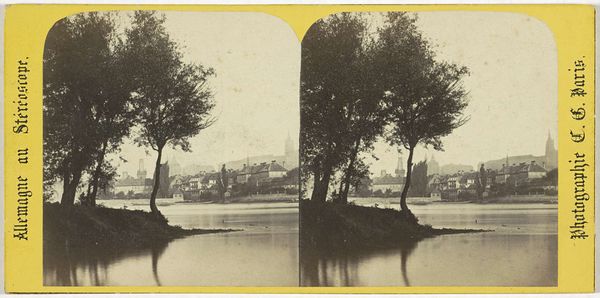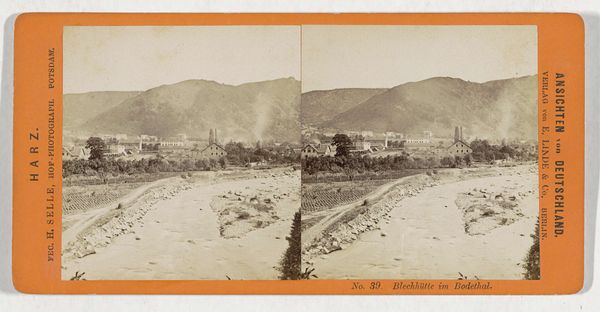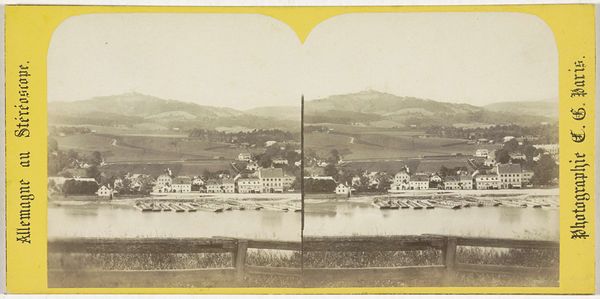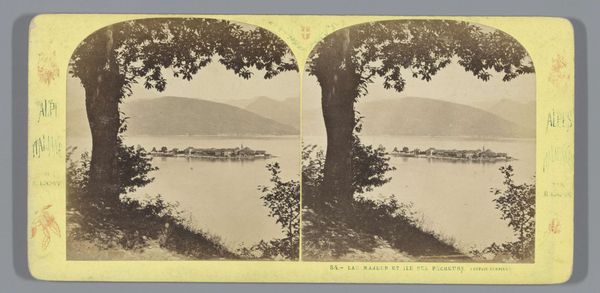
Dimensions: height 85 mm, width 170 mm
Copyright: Rijks Museum: Open Domain
This stereo card, presenting a view of Bad Schandau, was produced by Laurentius Herzog sometime between 1831 and 1913. The photographic print, mounted on card stock, takes us back to a time when photography was rapidly changing visual culture. The stereo card itself is a product of its time. It was a popular format for distributing images, allowing viewers to experience a sense of depth and immersion. The appeal of stereo cards lay in their accessibility and mass producibility. Photographers like Herzog could capture scenes and reproduce them relatively easily, making visual experiences available to a wide audience. This had implications for tourism, education, and the dissemination of information. They offered a glimpse into far-off places and experiences. The very act of viewing this stereo card connects us to a specific moment in history, reflecting the technological advancements and cultural trends of the late 19th and early 20th centuries.
Comments
No comments
Be the first to comment and join the conversation on the ultimate creative platform.
